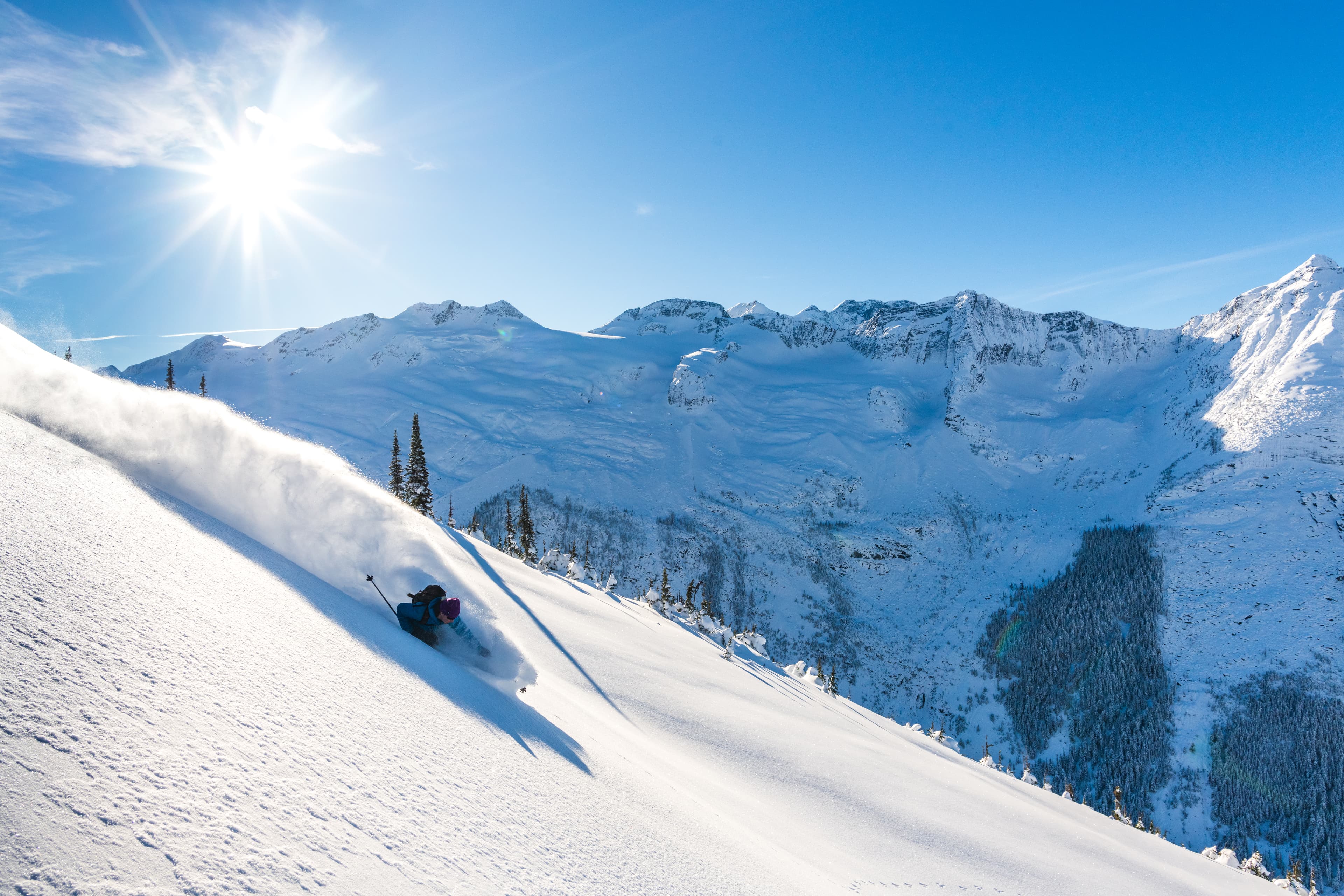Staying safe in Revelstoke's mountains.
We’re surrounded by world-class backcountry and some of the most accessible big mountain terrain in the whole of western Canada. The powerful mix of huge mountains and fresh powder is a combo few of us can resist but priority should always be keeping yourself, your group, and others in the backcountry safe.
Backcountry Touring & Resort Skiing
Repeat after us, there is no such thing as 'slack-country' or 'side-country'. Ducking a line means you are in the backcountry and avalanche safety equipment is necessary.
Snowmobiling
Every time you leave the staging area you choose to enter a backcountry environment with inherent risks, do you have the training to keep yourself & your group safe?
Essential Gear.
When it comes to equipment, these three essential tools must always accompany you into the backcountry:
A digital transceiver with at least three antennas (for multiple burials)
A probe (320cm is ideal for Revelstoke)
A shovel with a sturdy metal blade and extendable handle
These tools are essential to rescuing your companion should an avalanche occur. However, the most important pieces of equipment are the people in your group. Everyone must know how to use this gear and practice with it often. You should also carry enough food, water, and layers to survive a night out in the wilderness in case of an emergency.

Transiever | Avalanche Safety Equipment
Avalanche Safety Training.
Backcountry travel and recreation is a skill and there are important things to know before you get started. Visitors travel to Revelstoke for its varied terrain, easily accessible backcountry, and the seemingly endless fluffy gnar one would call powder snow. The combination of large snowfalls and complex terrain makes this area prime for avalanches.
As a minimum requirement for safe travel in avalanche terrain, you should complete an Avalanche Skills Training Course (AST-1). There are courses that cater to activities such as snowmobiling, touring, and snowshoe travel.
Your best tool in an emergency is yourself, so make sure you’ve got the knowledge you need.

Avalanche Safety Training | P Kate Ediger
Understand the forecast.
To make good decisions, you’ll need to know what avalanche conditions you’re likely to encounter. The daily forecasts provided by Avalanche Canada are the best place to get this information. The forecast will give you info on the snowpack, travel advice for terrain to seek out or avoid, and an idea of what to expect in the following days. Download the free Avalanche Canada app to get the forecasts on your phone (available on iOS or Android).
We are located in the South Columbia region.

Sledding | @c_masson89
Plan Ahead.
Preparation is key to a safe day in the backcountry. Before you go, always check the avalanche forecast and understand what weather to expect. Due to the turbulent nature of mountain weather, use several online resources to assess daily avalanche hazards, and weather and plan your route:
BC and Alberta Avalanche Bulletin (by Avalanche Canada)
Glacier National Park Avalanche Bulletin (by Parks Canada)
Detailed Weather Forecast (by Avalanche Canada)
Third-party Detailed Weather Forecast (SpotWX)
3D Satellite Topography (Google Earth)
In addition to planning your route, let people know where you are going and carry a satellite communication device.

Backcountry Touring, Glacier National Park | P Laura Szanto
Hire a guide.
Whether you are snowmobiling, touring, or snowshoeing, if you are unfamiliar with the terrain around Revelstoke, it is highly advised and recommended to hire a guide. They can show you the good spots and help you get the most out of your days.
Each of our Activity pages linked below has a section on Guides/Tours that you should check out!

Backcountry Touring Glacier National Park | P Laura Szanto
Gear
Cold Smoke Sled Rentals
Snowmobile rentals, avalanche safety gear, local knowledge, and partnered lodging discounts.
SledRent.ca
Sledrent is a local family-owned business, renting snowmobiles and gear. We are located just off Highway 1 and 23, at the gateway to Boulder Mountain and Frisby Ridge riding areas.
Stoked Mountain Adventures
We have the most up-to-date snowmobile rental fleet in the interior BC, also offering cabin rentals with shop space and hot tub.
Full Speed Rentals
Rent snowmobiles, snow bikes, dirt bikes, side by sides, watersports, and get the best service for all your toys in Revy.
Great Canadian Tours
Great Canadian Tours in Revelstoke offers a variety of summer and winter tours featuring snowmobiles, snow bikes, ATVs, dirt bikes, canoes, and SUP rentals. They provide guided backcountry adventures and all-inclusive packages for multi-day experiences.





